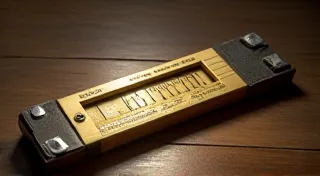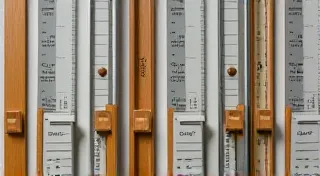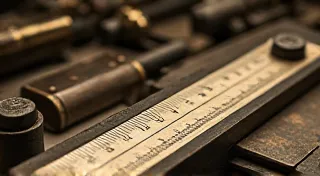Calculating Constellations: Slide Rule Geometry and the Poetry of Proportion
There's a quiet reverence that settles over you when you hold a classic slide rule. It’s more than just a vintage calculator; it's a tactile connection to an era of elegant problem-solving, of tangible calculations and a profound respect for precision. For those who grew up with digital devices, the slide rule might seem archaic, a relic of a bygone age. Yet, to those who understand its nuances, it represents far more than a simple tool – it's a portal to a unique understanding of geometry, proportion, and, surprisingly, a subtle form of artistic expression.
I remember finding my grandfather’s Pickett Model 1 in a dusty box, tucked away in the attic. It wasn't just the machine itself, with its worn ivory scales and satisfying click of the cursor, that captivated me. It was the feeling—the sense that I was holding a piece of history, a testament to the ingenuity of engineers and mathematicians who shaped the world around us. He was a civil engineer, a quiet, unassuming man who always seemed to see the underlying order in things. He rarely spoke about his work, but I recall him occasionally explaining how a bridge’s arch was determined, not just by load calculations, but also by an inherent sense of visual balance.
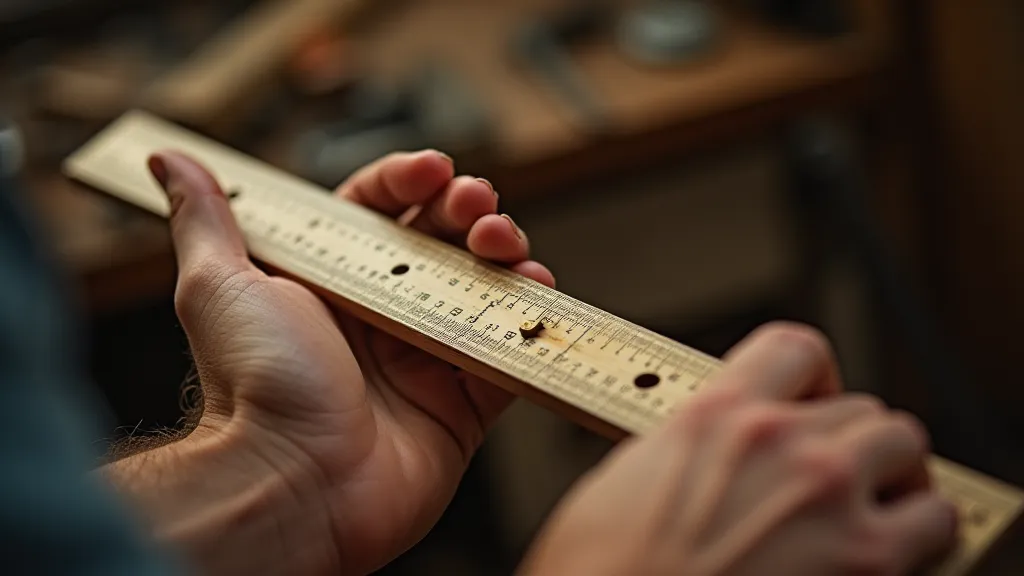
The Beauty of Ratios: More Than Just Numbers
The slide rule isn't simply a shortcut to multiplication and division. It's a visual representation of logarithmic ratios. Each scale is a meticulously crafted map of proportional relationships. Using it forces you to think about numbers in a fundamentally different way—not as isolated values, but as interconnected parts of a whole. This continuous awareness of proportion, I believe, instilled a unique aesthetic sensibility in many engineers of the past. It’s fascinating to consider how the principles governing slide rule calculations relate to broader fields like cartography and navigation; the precision required is incredibly similar. Indeed, even something as seemingly unrelated as the historical role of the cartographer's compass shows an echo of the same dedication to measurement and proportionality.
Consider the Golden Ratio (approximately 1.618), a mathematical constant that appears repeatedly in nature and art. From the spiral arrangement of sunflower seeds to the proportions of the Parthenon, the Golden Ratio has captivated artists and mathematicians for centuries. While it's unlikely that every slide rule user consciously applied the Golden Ratio, the very act of working with ratios, of visually manipulating proportions on the scales, likely fostered an intuitive understanding of its underlying principles.
Many historical accounts suggest that engineers of the mid-20th century, the heyday of the slide rule, were remarkably attuned to aesthetics. This wasn’t just functional design; it was a deliberate pursuit of visual harmony. Think of the streamlined architecture of the era, the elegant typography, the deliberate proportions of automobiles – all hallmarks of a design philosophy deeply influenced, I suspect, by the daily interaction with the precise and proportional world of the slide rule.
Craftsmanship and Connection: A Tangible Legacy
The slide rule itself is a testament to craftsmanship. These weren’t mass-produced, disposable items. They were meticulously manufactured, often from high-quality materials like ivory (now largely replaced, thankfully), mahogany, and brass. The accuracy of the scales was paramount, demanding a level of precision that’s rarely seen in modern manufacturing. Every click of the cursor, every smooth glide across the scales, reflects the dedication of the artisans who created them. Maintaining a vintage slide rule requires a certain skillset – understanding how to solve common slide rule problems and troubleshooting issues becomes almost a form of applied history.
Restoring a vintage slide rule is a deeply satisfying experience. It’s not simply about cleaning and lubricating the parts; it’s about connecting with the history of the tool and the people who used it. A little bit of shellac here, a careful realignment of the scales there—and suddenly, a seemingly lifeless object is brought back to life, ready to calculate once more. Each repair carries with it a story, a silent conversation with the past. The scent of old wood and lubricants is a nostalgic reminder of a simpler era.
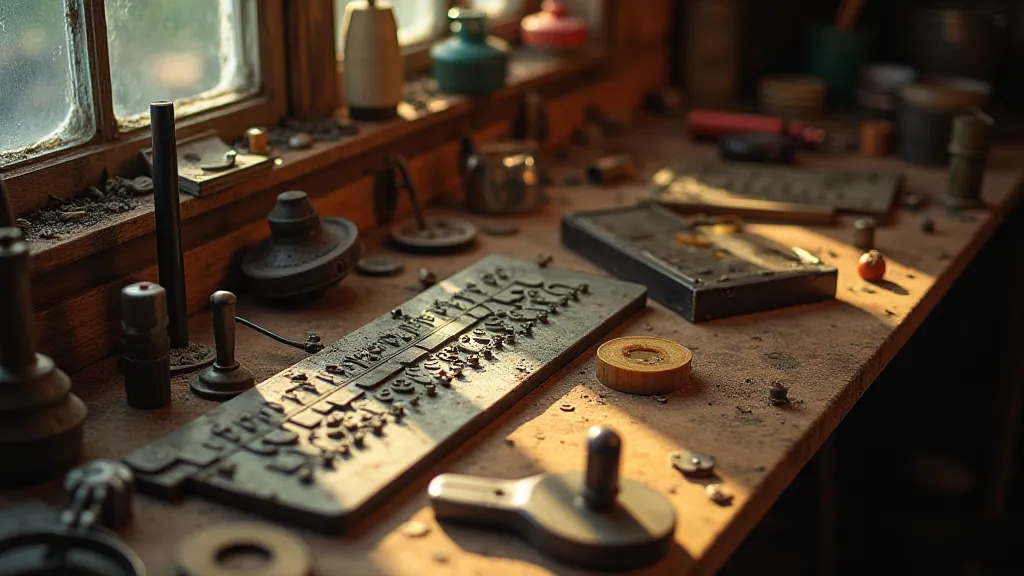
Beyond Engineering: The Ripple Effect on Design
The impact of slide rule geometry extended far beyond the realm of engineering. I spoke with Evelyn Reed, a renowned typographer, who readily admitted to a lifelong fascination with slide rule principles. "The way you manipulate scales, the awareness of proportional relationships—it translates directly to typography," she explained. "Setting type isn't just about choosing a font; it's about creating a visual rhythm, a sense of balance and harmony. The slide rule, in a way, gave me a vocabulary for that.”
Similarly, many architects of the mid-century modern movement incorporated slide rule principles into their designs. The clean lines, the balanced proportions, the overall sense of order – these weren’t simply stylistic choices; they reflected a deep understanding of geometric relationships that was, I believe, cultivated by a generation of engineers intimately familiar with the slide rule. The broader history of these tools further illuminates their importance; exploring the role of slide rules in engineering history reveals the profound impact they had on design and technological advancement.
The influence isn’t just about direct application, either. It’s about the underlying way of thinking—the awareness of proportional systems and the appreciation for visual harmony that permeated the culture.
Collecting and Preservation: Keeping the Legacy Alive
Collecting vintage slide rules is more than just accumulating objects; it’s about preserving a piece of history, a tangible link to a bygone era of ingenuity and craftsmanship. While the technology has moved on, the underlying principles remain relevant. Understanding the mechanics of a slide rule, appreciating its elegance, and preserving its legacy—these are acts of both historical preservation and intellectual enrichment.
When collecting, look for models that are in good working order, but don't be afraid of those that need a little TLC. A slide rule with character – a few scratches, a slightly faded scale – tells a story. Research the manufacturers, learn about the different models, and appreciate the subtle differences in design and functionality. The subtle differences in material and construction often reflect shifts in manufacturing techniques and available resources throughout the slide rule's lifespan.
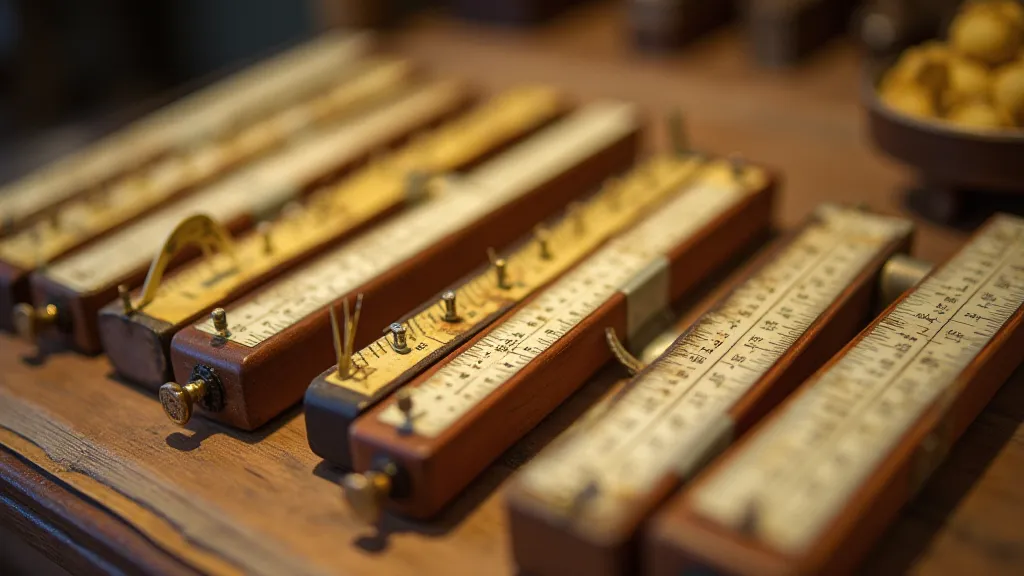
A Quiet Revolution in Thinking
The slide rule may be a relic of the past, but its legacy endures. It represents a unique intersection of engineering precision and artistic expression, a testament to the power of tangible problem-solving and the enduring beauty of mathematical relationships. The next time you encounter one, take a moment to appreciate not just its function, but also the quiet revolution it fostered in the way we think about the world – a revolution in proportion, in geometry, and in the pursuit of visual harmony.
Beyond their practical applications, slide rules fostered a different way of interacting with the world. They demanded a slower pace, a deliberate engagement with numbers and shapes. This mindful approach to problem-solving, this appreciation for tangible results, has been largely lost in our age of instant calculations and virtual simulations. Perhaps, by re-engaging with these tools, we can rediscover a bit of that lost connection, a deeper understanding of the elegant systems that govern our universe. Consider the impact on education – the ability to visualize mathematical concepts and apply them in a hands-on manner fostered a different kind of understanding, a grounding in fundamental principles that is often lacking in modern, more abstract forms of learning.
The resurgence of interest in vintage technology, including slide rules, speaks to a broader desire for authenticity and connection in a rapidly changing world. It’s a yearning for something tangible, something that can be held and understood, rather than something that exists only in the digital ether. And it’s a reminder that true innovation often arises not from chasing the newest technologies, but from rediscovering the wisdom of the past.
